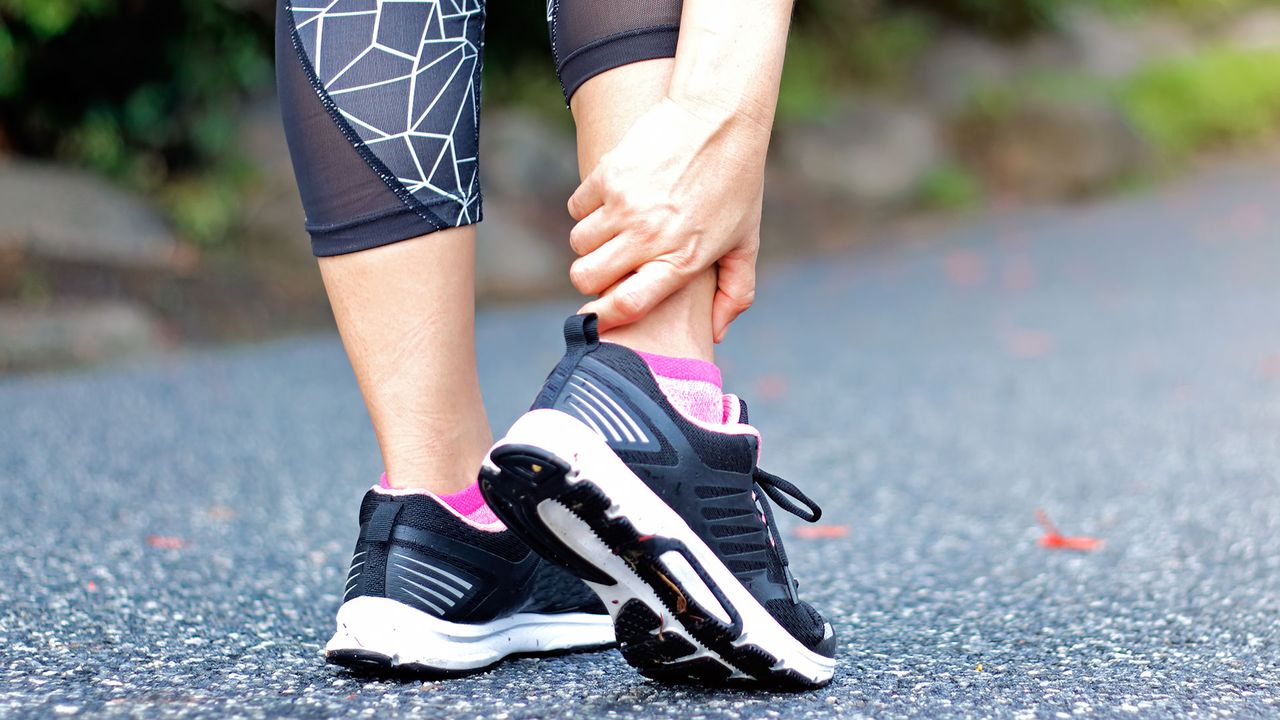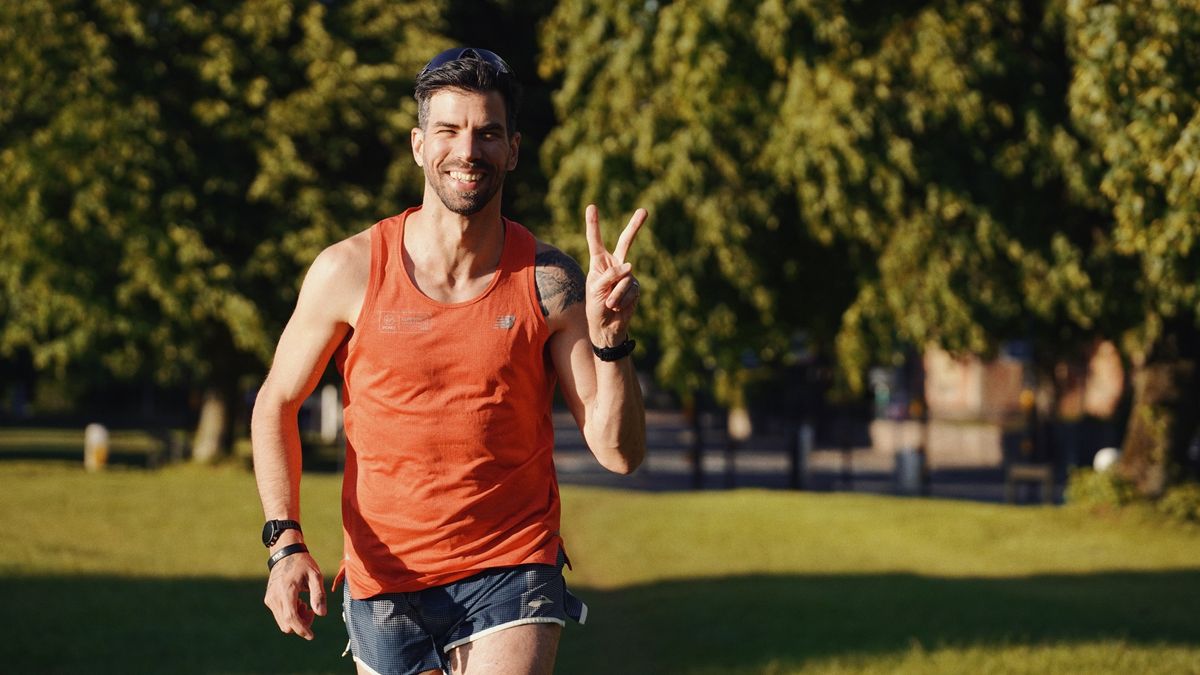After a few months of putting more emphasis on strength training, I decided to start running more again, mostly because the weather was nice and I had a lot of shoes to try. I figured, 10k a day for a week should be challenging enough to prepare my legs for a more strenuous workout, but not absolutely kill me in the process. Was it a good idea? Well yes and no.
I love running. It’s a form of movement I’ve always found comfort in, no matter the mileage. Some weeks I will run more, while others I will focus on strength training or HIIT or walking. Either way, running has always been a part of my life to some degree.
I am not a fast runner; I never made the ultimate sacrifice of shedding all the extra muscle mass to hit top running speed. That said, I’m not a slow runner either: I can run a half marathon in under 90 minutes, although I know many amateur runners can do it in under 70.
After building a semi-decent home gym during the pandemic/lockdown (I even have a barbell and 100kg of bumper plates, much to the delight of my neighbors), I shifted my efforts toward strength training and workouts at home, away from running. I jogged from time to time and tried the best running shoesof course, but I didn’t go running multiple times a day like I sometimes do when training for races etc.
Run 10k every day for a week: play it safe
However, in the last four weeks, I have met some very inspiring runners who reignited my passion for running; Not to mention, I also had plenty of running shoes to try on, so I decided it was time to return to running as my primary recreational activity. I had to increase my mileage, so I decided to run 10 km every day for a week; that should be enough, for now.
Increasing my mileage that much came with a few caveats. Most importantly, I realized (once again) that there is a reason why the 10% rule exists. As a general rule of thumb, you should only increase your weekly mileage in 10 percent increments to preserve leg health and prevent injury.
If you run 10 miles a week and would like to run more, you should run 11 miles the second week, 12.1 miles the following week, and so on.
I completely ignored this rule and instead went straight for the kill with this challenge. And indeed, my legs were a little sore, to say the least, halfway through the challenge. In addition to learning to appreciate the 10% rule, I also learned six more things from running 10k every day for a week, as detailed below.
For the record, here it is my Strava (opens in a new tab) as proof that i actually ran 10k every day and not just say it like other posts often do…
This is what it looks like when I do pull-ups, 100 times a day
(Image credit: Future)
1. Fitness challenges are stupid
I rarely participate in fitness challenges and when I do, it’s because I got into a training rut. I did 100 pull-ups in a week before and even tried the 10,000 Swing Kettlebell Challenge. However, every time I do these challenges, I keep thinking that I don’t want to do them again because they’re dumb.
The main problem with fitness challenges is that they usually overload one area of the body (often one muscle group) and neglect others entirely. This is not healthy or beneficial for their physical development. In any case, it is dangerous and pointless; however, people can’t stop reading about fitness challenges, so they keep doing them.
You can do fitness challenges in a sensible way, keeping an eye on your body and monitoring/working on any sore spots, but admittedly, that’s not nearly as exciting as an all-out effort. I tried to balance the two approaches without deviating from the original goal of running 10K every day, but doing my best to make sure my body was ready for the sessions every day.
2. Recovery is everything
The “Make sure my body is ready” part of the sentence above refers to recovery, the most important part of this challenge, at least as far as I’m concerned. Even before I started, I knew my legs wouldn’t like the increased training load, so I followed a rigorous recovery program from day 1 to make sure I minimized the risk of injury as much as possible.
This involved warm-ups; sometimes i used a massage gun to energize my calves before the race – after the race foam roller sessions and the use of my favorite recovery tool, the Therabody RecoveryAir JetBoots. I also made sure to get the best sleep possible and even put on compression running socks after races to improve recovery.
The only thing I didn’t do was ice baths, something i really like but I don’t have the capacity at home to do it. If I had a keg or something that could stay cool without wasting tons of water every day, I would totally use it for post-race recovery. But even without the ice barrel, I used every tool at my disposal to avoid injury.

Running a lot can be a painful experience
(Image credit: Getty)
3. Lungs are ok, heart is ok, stamina is ok, legs…not ok.
On my daily runs, I would always check my body to see how it was doing. I started with the lungs, then the heart, and even checked my stamina, which is super easy if you have a Garmin Phoenix 7X either Garmin Epix (2nd generation) multisport watch (I have the first).
All three metrics were fine; if anything, they continued to improve as the week progressed.
One area that did not improve and actually got worse was my legs, especially my calves and shins. I got to the point on day 3 where any change in incline felt like someone was stabbing my lower legs with a knife, so I ended up running the same little 1.1k loop nine times; that was the only area where elevation didn’t bother me
And that’s despite the fact that I did all the recovery under the sun to keep them fit. To tell the truth, they were much better on the seventh day, but only because I did everything I could to help them recover. You can’t overtrain and ignore recovery, that’s how people get injured.
4. It’s all in the head
Leg pain aside, I often found myself wanting to stop after 5-6-7k just because. My brain told me that I had run enough; it was time to slow down and allow my legs to recover. Most of the time, I could force myself to keep going, even if I was a bit slower, which shows that being able to run longer distances is only partially due to physical preparation; you also have to be mentally ready. .
I like to run without music, as much as I love running headphones – but this means that sometimes I can get caught up in my thoughts as nothing takes my attention away from how tired I am or how sore my legs are. I can easily convince myself that my legs are too tired to continue or that I just need a little break to help me with the rest of the workout.
Most of the time, these thoughts do not correspond to any physical symptoms; they are just fleeting thoughts, something that distracts. You should listen to your body, but running also forces it to do something it doesn’t want to do, so it’s understandable that it defends itself by thinking you should stop.
Try not to give in and always keep in mind the main goal of the training: that could help you keep going, no matter how impenetrable it is. Wall feel.

(Image credit: Matt Kollat/T3)
5. You must have the proper running gear if you do a high-mileage workout.
I am lucky to have access to the best running gear; after all, I make a living testing running shoes. For this challenge, I chose to run in different shoes every day to see what difference (if any) they made. This is the list of shoes I used:
As you can see, I tried to mix things up a bit; I used daily trainers as well as runs and trail running shoes. I even snuck a couple of stability shoes right at the end, just in case.
I also dressed differently running shorts Y running shirts; my favorites were Brooks Sherpa Shorts with 3″ Split (opens in a new tab) (retail link) and New Balance London Edition Impact Run Tank Top (opens in a new tab) (also a retail link). Starting from a running socks point of view, nothing beats the adidas UltraLight Performance Crew Running Socks (opens in a new tab) in pink (you guessed it, retailer link); it is light and looks sexy.
I’m sure you could significantly increase your mileage without wearing top-of-the-line sportswear, but it helps keep your risk of injury to a minimum if you take care of your body by wearing performance clothing. It certainly helped me.
6. Variety is key in training
One of the biggest things I learned from my experience is how important variety is when it comes to training. Doing the same workout day after day is not only boring, it’s also dangerous as it forces the same muscles and joints to do the same movement over and over again with the same intensity. This type of training becomes repetitive and does not allow recovery; again, the best way to get injured.
The more intense your training, the more varied it should be. There are many different types of running trainingfrom fartlek to recovery runs, and you should use them all to get better at running and keep things cool. Even if his plan is as simple as run 5k fasterIntroducing longer, slower sprint sessions and runs can help you progress through your training plan.
Some running clocks – especially the best garmin watches – have built-in running coaches who can train you sensibly, even if you’re scared to ask a human coach for help.
